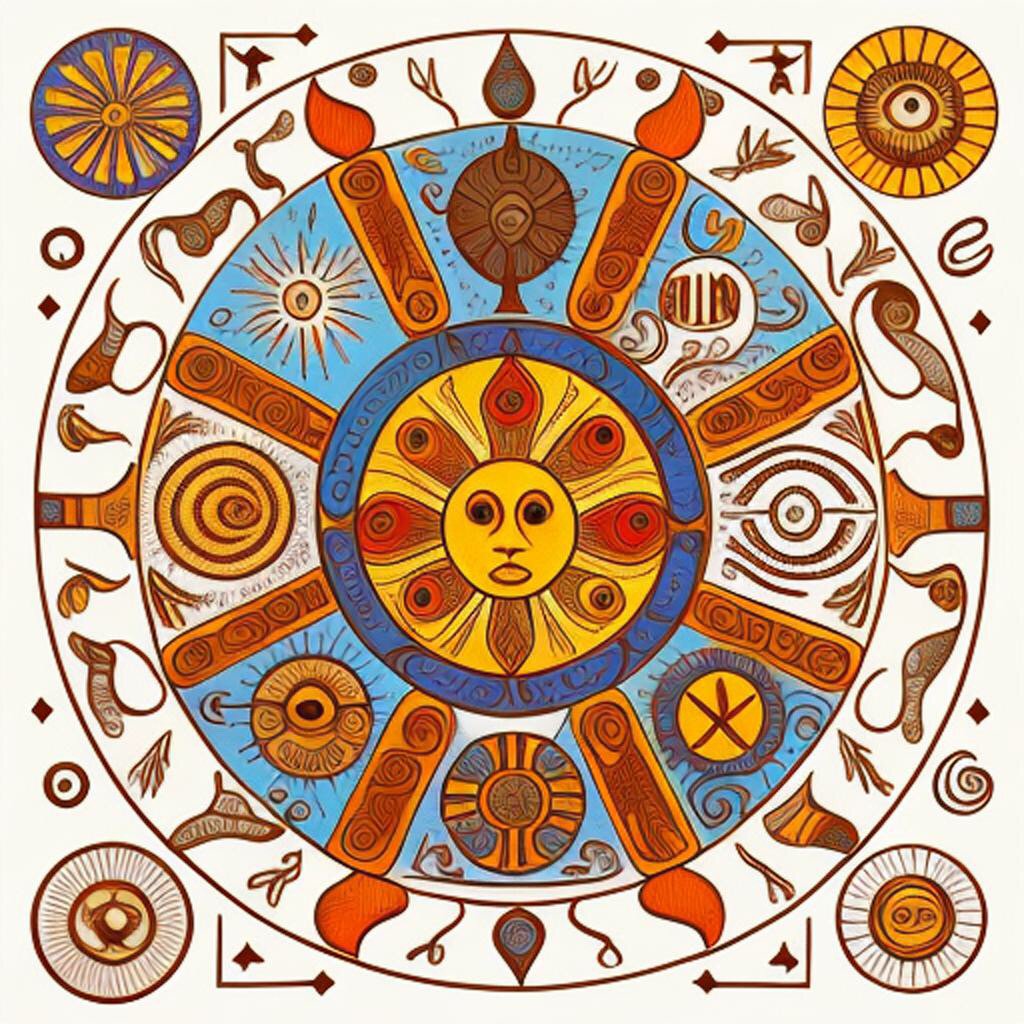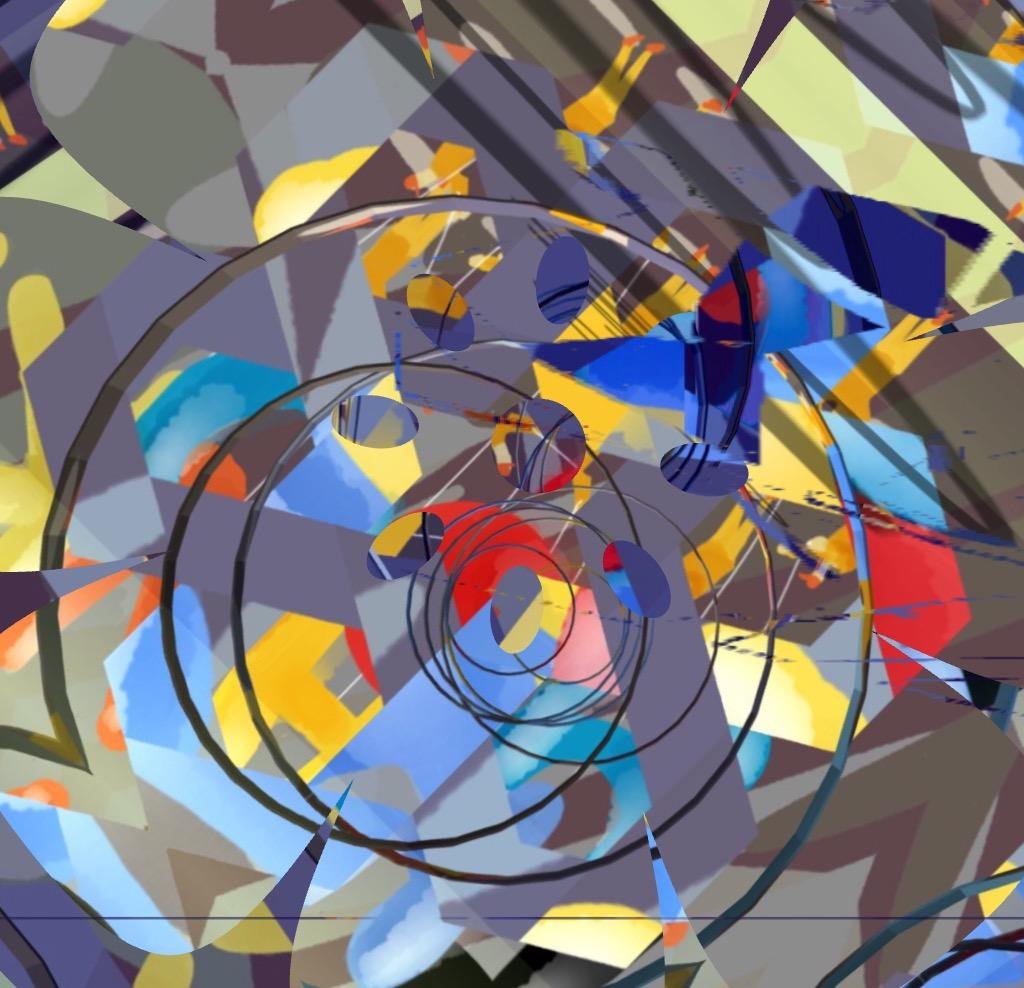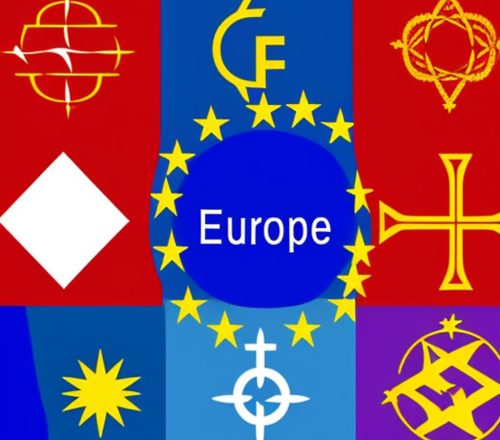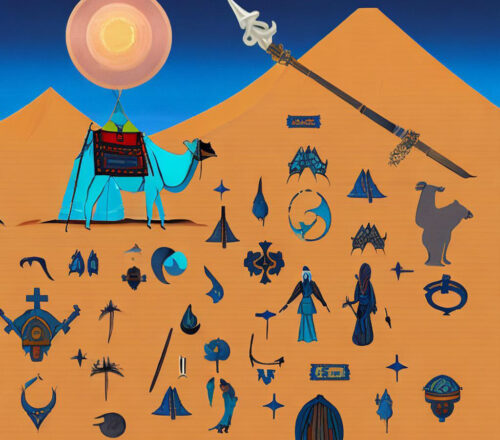
Table of Contents
Symbols of the Pazyryk culture
The Pazyryk culture was rich in symbolism, with various objects and motifs carrying significant meaning. These symbols provide insights into their beliefs, social structure, and cultural practices. Here are some key symbols associated with the Pazyryk culture:
Animal Motifs
Animals held great symbolic importance in Pazyryk culture. They were depicted in artwork, carvings, and on various artifacts. Some common animal motifs include horses, deer, wolves, and snow leopards. These animals represented qualities such as strength, agility, fertility, and the connection between humans and the natural world.
Sun and Solar Symbols
The sun held a special place in Pazyryk beliefs, and solar symbols were commonly represented. Circular or radiant symbols, often resembling sun disks, were depicted on artifacts, including clothing, jewelry, and carvings. These symbols likely represented the life-giving and protective powers associated with the sun.
Tree of Life
The Tree of Life motif was another significant symbol in Pazyryk culture. Often depicted with branches reaching upward and roots extending downward, the tree represented the connection between the earthly and spiritual realms. It symbolized growth, regeneration, and the cyclical nature of life.
Zoomorphic Figures
Zoomorphic figures, which combined human and animal features, were prevalent in Pazyryk art. These hybrid beings were often depicted with human bodies and animal heads or other animal attributes. They likely represented shamanic or mythical figures, bridging the gap between humans and the spiritual world.
Swastika
The swastika, a symbol found in various cultures worldwide, was also present in Pazyryk art. In the Pazyryk context, the swastika likely represented solar symbolism, prosperity, and good fortune. It should be noted that the swastika holds different connotations in modern times due to its association with Nazi Germany, but its use in ancient cultures predates that period and carries distinct meanings.
Geometric Patterns
In addition to animal and mythological motifs, geometric patterns were prevalent in Pazyryk art. Intricate and symmetrical designs adorned clothing, textiles, and objects. These geometric patterns may have held symbolic meanings related to harmony, balance, and cosmic order.
It’s important to approach the interpretation of symbols in the Pazyryk culture with caution, as our understanding is based on limited archaeological evidence. Symbolism can vary in meaning across different contexts and may have had nuanced interpretations within the Pazyryk cultural framework. Nevertheless, these symbols offer valuable clues to the worldview and beliefs of the Pazyryk people.
World’s Oldest Carpet
Geometric patterns found in Pazyryk art
Geometric patterns found in Pazyryk art often exhibited intricate and symmetrical designs. While there is variation in the specific patterns across different artifacts and mediums, some general characteristics can be identified:
Symmetry
Geometric patterns in Pazyryk art often showcased a high degree of symmetry. Symmetry was achieved through the repetition of shapes and motifs, creating a sense of balance and harmony in the overall design.
Interlocking and Overlapping Shapes
Many geometric patterns featured interlocking and overlapping shapes, creating a complex visual composition. These shapes could include triangles, circles, squares, diamonds, or combinations thereof. The interplay between these shapes resulted in visually captivating designs.
Linear and Curvilinear Elements
Geometric patterns in Pazyryk art incorporated both linear and curvilinear elements. Straight lines and angles were often used to create geometric precision, while curves and arcs added fluidity and movement to the designs.
Grids and Borders
Some geometric patterns utilized grid-like structures or borders as a framework for the overall design. Grids could consist of intersecting lines, creating a network of geometric compartments that were filled with various motifs or smaller geometric patterns.
Repetition and Recursion
Repetition played a significant role in Pazyryk geometric patterns. Motifs, shapes, or smaller patterns were repeated and mirrored to create a sense of rhythm and unity within the design. Recursive patterns, where smaller motifs were nested within larger ones, were also observed.
Abstract and Geometricized Nature
Pazyryk geometric patterns often drew inspiration from elements of the natural world, such as plants, animals, or natural phenomena. However, these elements were typically abstracted and stylized into geometric forms, emphasizing the symbolic and decorative aspects of the designs.
Color and Material
While the original colors of the Pazyryk geometric patterns have mostly faded over time, it is believed that these designs were often vibrant and colorful. The patterns would have been applied to various materials, including textiles, wood, or metal, adding to the visual impact of the designs.
The precise meanings and significance of specific geometric patterns in Pazyryk art are not always clear. However, the intricate geometric compositions reflect the Pazyryk people’s artistic skill, aesthetic sensibility, and their inclination to create visually captivating and harmonious designs within their cultural context.
Available reference sources
There are numerous sources available that provide depictions and images of the Pazyryk tombs, mummies, artifacts, and symbols. Here are some suggested resources where you can find visual representations of Pazyryk archaeological discoveries:
Books and Academic Publications
Many scholarly books and academic publications dedicated to Pazyryk archaeology include photographs, illustrations, and diagrams showcasing the tombs, mummies, artifacts, and symbols. Examples of such books include “Frozen Tombs of Siberia: The Pazyryk Burials of Iron Age Horsemen” by Sergei I. Rudenko and “The Pazyryk Agenda” by Hermann Parzinger.
Museum Collections
Several museums house Pazyryk artifacts and offer online collections where you can view images of the tombs, mummies, and associated objects. The State Hermitage Museum in St. Petersburg, Russia, and the State Museum of the History of Religion in St. Petersburg are notable institutions with Pazyryk collections.
Archaeological Databases and Online Archives
Online databases and archives, such as the Archaeological Research Collection at the University of Pittsburgh, may provide access to photographs and documentation of Pazyryk artifacts and symbols.
Academic Journals and Research Papers
Various academic journals in the field of archaeology and ancient history may include articles that present visual representations of Pazyryk tombs, mummies, and artifacts. Some prominent journals to explore include Antiquity, Journal of Archaeological Science, and Archaeology, Ethnology & Anthropology of Eurasia.
Documentary Films and Documentaries
Documentaries focused on Pazyryk archaeology often include visual representations of the tombs, mummies, artifacts, and symbols. Searching online streaming platforms or video-sharing websites may lead you to relevant documentaries or footage.
Remember that while these resources provide visual representations, it’s important to critically assess the reliability and accuracy of the information presented, ensuring they are based on credible archaeological research and scholarship.
Thank you for reading, shares and comments!
✨ Comment Policy ✨
We welcome thoughtful, kind, and constructive comments that contribute to meaningful conversations.
Please note:
- Promotional links and unsolicited offers will be removed.
- Spam, irrelevant content, or self-promotion without prior permission will not be published.
- We value quality engagement over quantity — thank you for helping us keep this a respectful and inspiring space!
Sources openai Language models, aitrot, picsart and mib
Take time to learn
Invest in your future
Embark on a journey into the realm of affiliate marketing and craft your own website within a vibrant, supportive community. Join me in this adventure, where you can begin as a free starter and stay as long as you desire. Enjoy complimentary hosting and foundational teachings to set you on your path. For those with advanced skills, opportunities to elevate your expertise await. Take a moment to explore and witness the magic for yourself!




